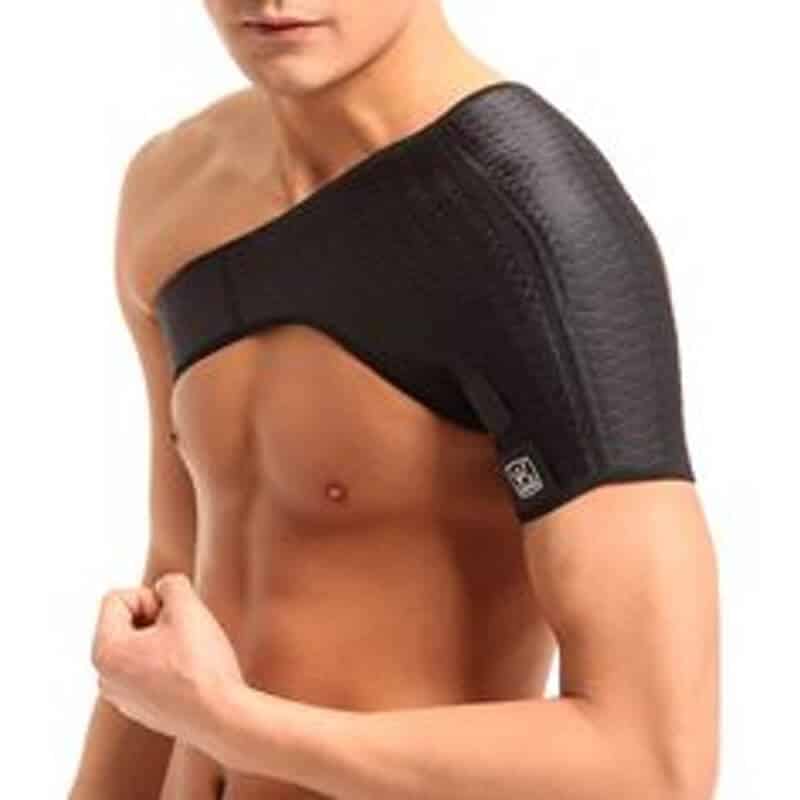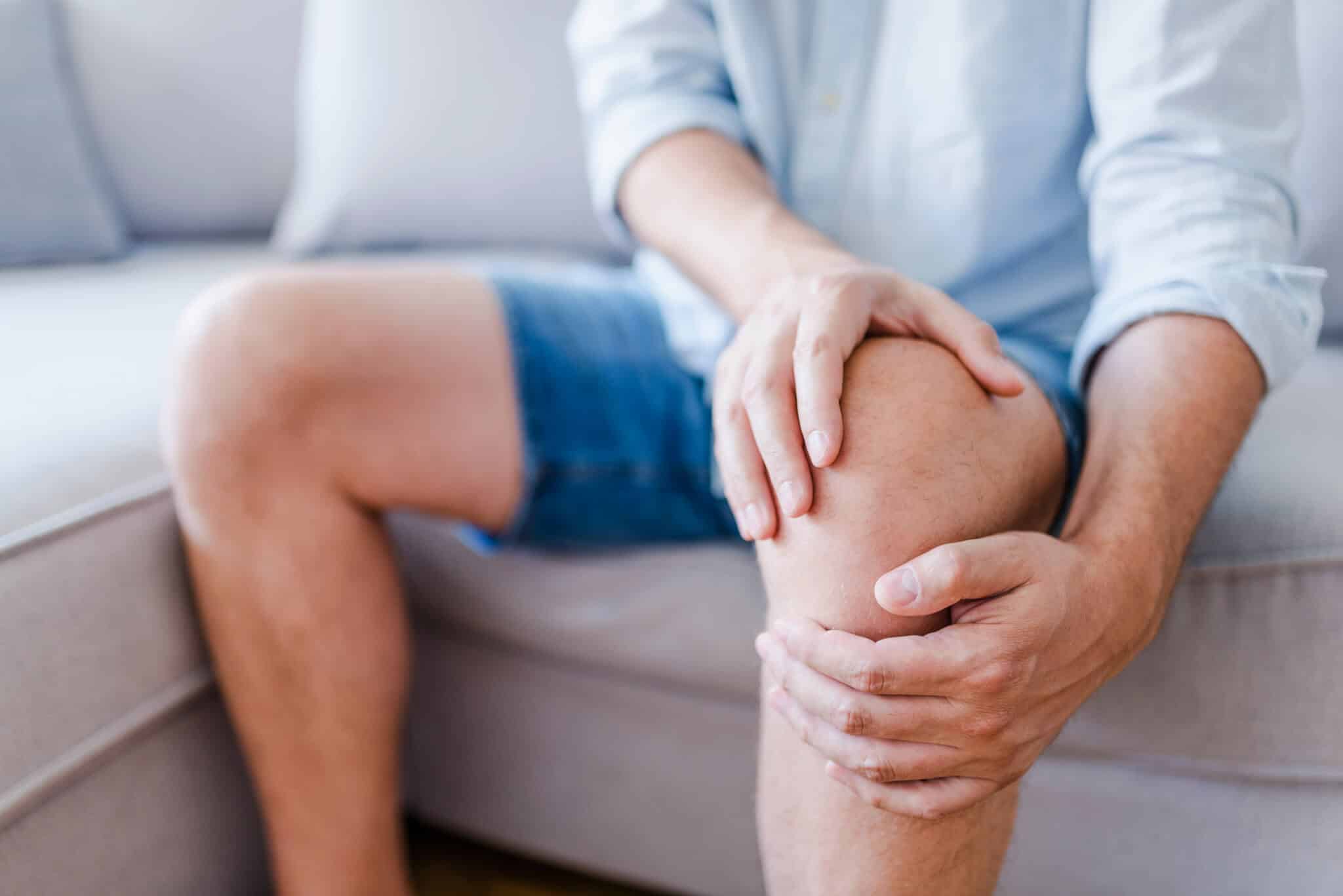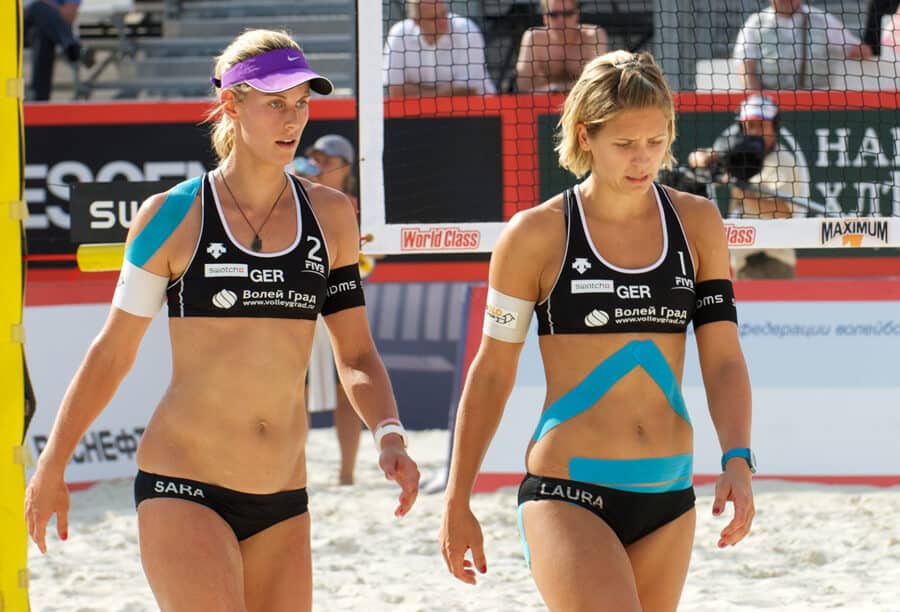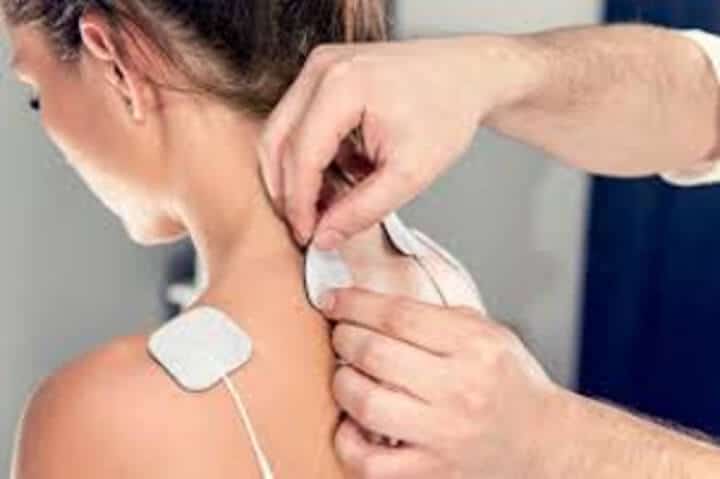Wearing A Shoulder Brace
In this post, we examine key questions surrounding the use of a shoulder brace to manage the pain of shoulder injuries or other conditions. By the end of this article, you will be able to understand how shoulder braces work and identify whether your injury might be treatable using such a brace. You should also be able to identify other treatments for your injury, some of which may be used in conjunction with shoulder bracing.
How Do Shoulder Braces Work?
Shoulder injuries can happen on impact while you’re playing sports, have an accidental fall, and even from overuse. There are several kinds of shoulder braces available and each one helps in specific ways to assist athletes recovering from a certain injury.
Many shoulder braces help immobilize the arm and shoulder in order to provide support to the injured area and minimize movement. This allows the shoulder to heal without undue stress while also minimizing the risk of re-injury.
Other shoulder braces provide compression. These braces are for athletes who are slowly getting back to sport or training while they recover or for athletes with mild injuries. The compression qualities of these shoulder braces provide an adequate level of protection and support, offload stress and force from the injured area into surrounding areas of the body and the brace itself, and help regulate blood flow to decrease swelling/inflammation and pain while speeding up the recovery process.
Research studies into how shoulder braces work have shown that they can also help increase an athlete’s awareness of the position of their arm, the amount of force their muscles are applying and how this coordinates with other muscles. This is otherwise known as proprioception. Improving proprioception can help stabilize the shoulder, prevent injury and maximize performance.
Some shoulder braces also work by offering resistance, which can help strengthen the shoulder during training as the muscle must work harder to complete certain activities due to the resistance. This can also improve performance, strengthen weak structures in the shoulder and arm and help rehabilitate an existing injury.
What Types Of Injuries Require A Shoulder Brace?
It is often quite difficult to adequately assess the severity of a shoulder injury and the structures damaged following sports injuries. Because of this, athletes should always consult a physician or medical professional before choosing a shoulder brace to determine the exact cause and severity of an injury. The following explains some of the most common shoulder injuries people can sustain and how a shoulder brace can work to aid recovery:
Dislocated Shoulder
Because the shoulder joint is the most mobile joint in the body it is prone to instability and is the most common joint to dislocate. Shoulder dislocation can occur through trauma, such as being tackled during a football game or being body checked during a hockey game. A shoulder brace can help immobilize the injury while it heals and can help the joint recovery after surgery if necessary.
Acromioclavicular Joint (ACJ) Injuries
The hard small lump you feel on the top of your shoulder is your acromioclavicular joint (ACJ). This joint is very important for overhead and throwing athletes. You can sprain this joint by repeated falls on your shoulder or through a football tackle. It can also dislocate. A shoulder brace can help decrease the swelling and inflammation in a sprained ACJ facilitating recovery and can help stabilize a dislocated ACJ during recovery or after surgery.
Impingement Syndrome
Shoulder Impingement Syndrome occurs with repeated use of the arm in overhead motions and leads to the development of small bony spurs which trap the rotator cuff tendons above the main shoulder joint. A shoulder brace can help decrease pain and limit movement in order to heal the area.
Rotator Cuff Tears
The rotator cuff is a very important group of tendons that provide movement and stability for your shoulder. When the rotator cuff is damaged, it leads to pain and weakness. Tears caused by injury, especially in athletes, benefit from the immobilization and support shoulder braces provide as the tears can get bigger and more difficult to repair. Shoulder braces can also provide a way to strengthen the rotator cuff after it has healed sufficiently, which can prevent re-injury.
Labral Tears
The labrum is a cushion surrounding the socket of the shoulder joint. Labral tears usually follow falls or direct blows to the shoulder, but may also occur while throwing or pulling. A shoulder brace can provide support and manage blood flow to the area, helping repair the tear and decrease pain.
Shoulder Arthritis
Shoulder arthritis occurs when the joint wears with age or overuse. The joint loses its original lubrication and becomes stiff and painful. Keeping the shoulder active and the muscles toned is of benefit. Shoulder braces can help strengthen the joint while decreasing the pain associated with arthritis. Shoulder braces can also help train the joint to maximize its range of motion and either reduce the effects of arthritis or help prevent it from occurring.
What Other Methods Of Recovery Can Supplement My Shoulder Brace?
There are two main components athletes can use to supplement the effects of a shoulder brace when recovering from a shoulder injury. The first is rest. Allowing the shoulder time to heal properly sounds simple, but is often a big mental hurdle for athletes. A shoulder brace works by helping athletes rest the shoulder by immobilizing it while also providing a physical reminder that even though you may feel like you should be getting back to training, it’s best to be cautious, heed the advice of medical professionals and rest until fully recovered.
The second main element of recovery for a shoulder injury outside a shoulder brace is physiotherapy, active rehabilitation and specialized stretching. Physiotherapy exercises specifically designed to strengthen the structures surrounding the injured area of the shoulder and arm can provide strength and stability to the shoulder. It allows the shoulder to heal quickly without undue stress or trauma. It also helps to reduce the risk of re-injury once back in competition or training.
There are also several other methods of recovery that athletes can be used in conjunction with shoulder braces. You can use hot and cold therapy to reduce swelling, inflammation and pain by regulating blood flow to the area. Painkillers and steroid injections or creams can also be used in specific cases as advised by medical professionals. Lastly, surgery may be an option for severe shoulder injuries.








Whrther Unloading knee brace can be worn at a stretch for 2 to 3 hours when sitting intermittently during walk for a considerable distance ? I feel it to get tightened around knee whenever sitting on a stool to make right angle position of knee joint. Also skin starting irritation over the area it is worn and requires scrathing.